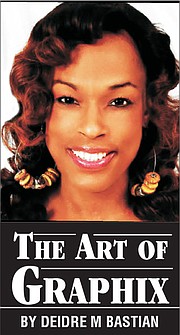PNG (portable network graphic) is a type of image file that is often favoured in web design and creative projects involving Photoshop or similar software. It is a type of file that allows an object to be placed into software with a clear background or as a partially transparent image, making it especially useful when creating a graphic from multiple layers. PNG is one of my favourite image files.
PNGs tend to take up more space than alternative image files, so you may want to limit how many you use if storage is an issue. This is because they offer far greater detail, and also support grey scale, as well as both the 24-bit RGB and 32-bit RGBA colour spaces. They are not designed to be compatible with CMYK models, though, and it is not recommended to use them when dealing with printed materials. This wider range of supported spaces contributes to the larger PNG file size versus other types.
Another benefit of using PNGs is that they are more easily accessible when it comes to copyright, given that they take the form of an open format that can be more widely used without requiring a license. GIF has almost completely replaced PNG in publishing, partly because they are so popular for sharing multi-frame images, and also for compressing down the size of an image file. However, unlike GIF, PNG files do not support animations. The very similar MNG (Multiple-image Network Graphics) format does, but has yet to gain the kind of popularity that GIF or PNG files have.
What is PNG format used for?
The Portable Network Graphic (PNG) file format is ideal for websites, digital art (flat images, logos, icons), and uses 24-bit colour as a foundation. The ability to use a transparency channel increases the versatility of this file type.
How big is a PNG file?
Sometimes a PNG can be too large in size, and not only use unnecessary disk space or make it harder to e-mail, but can also drastically slow down a web page if you are using one. Notably, a full-size PNG has a file size of 402KB (kilobytes).
It is wise to check if the image quality benefits are enough to sacrifice that space (or slow web page loading). Because a PNG file does not compress the image like other lossy formats, such as JPEG, quality does not diminish as much when the image is in the PNG format.
Moreover, JPEG files are useful when the image is low contrast, but PNGs are better when dealing with sharp contrast. This happens when there are lines or text in the image, as well as large areas of solid colour. Screenshots and illustrations are best in PNG format while “real” photos are best as JPEG/JPG.
You might also consider using the PNG format over JPEG when you are dealing with an image that needs to be edited over and over again. For example, since the JPEG format undergoes what is called generation loss, editing and saving the file again and again will result in a lower quality image over time. This is not true for PNG because it uses lossless compression.
Can you edit a PNG file?
Unfortunately, in order to edit it extensively, PNG needs to be converted into a more manageable file type. There are lots of extensions that allow for further editing but Illustrator is a lot more complex.
How do I make a PNG file?
Open the image you want to convert into PNG by clicking File > Open. Navigate to your image and then click “Open”. Once the file is open, click File > Save As. In the next window make sure you have PNG selected from the drop-down list of formats, and then click “Save”.
What is difference between PNG and JPG?
Ultimately, the main difference between JPG and PNG is the compression algorithms they use. JPG uses a lossy compression algorithm that discards some of the image information in order to reduce the size of the file. PNG image quality will not change, but the size of the file will be larger. Until we meet again, fill your life with memories rather than regrets. Enjoy life and stay on top of your game.
NB: Columnist welcomes feedback at deedee21bastian@gmail.com
ABOUT COLUMNIST: Deidre M. Bastian is a professionally-trained graphic designer/brand marketing analyst, author and certified life coach with qualifications of A.Sc., B.Sc. and M.Sc. She has trained at institutions such as: Miami Lakes Technical Centre, Success Training College, College of The Bahamas, Nova Southeastern University, Learning Tree International, Langevine International and Synergy Bahamas.





Comments
Use the comment form below to begin a discussion about this content.
Sign in to comment
Or login with:
OpenID